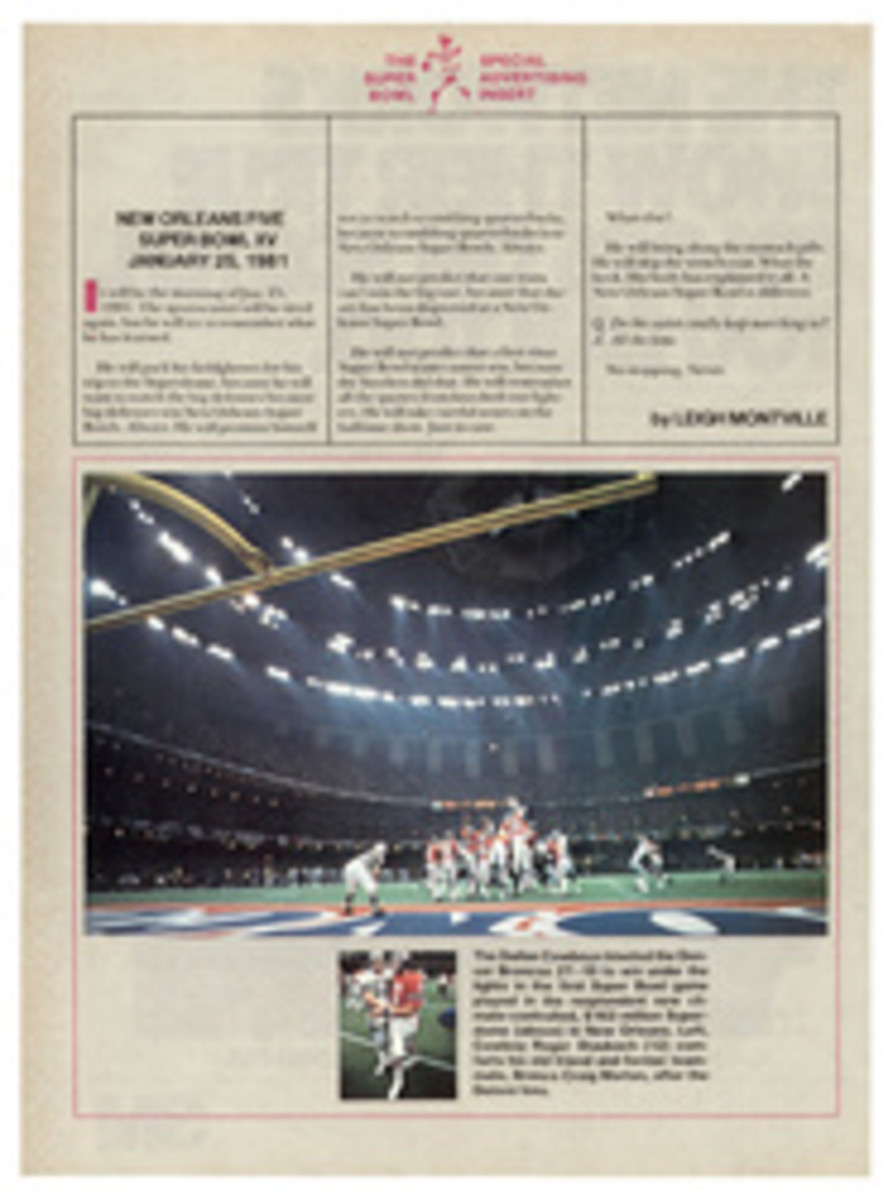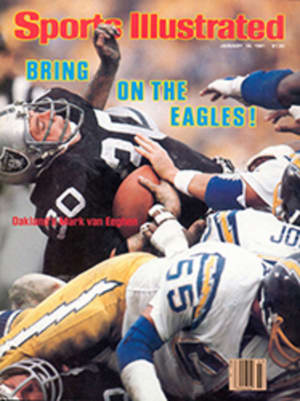
Heeeere's Johnny—again!
There must be more Apache than Mormon in Johnny Miller. He's to desert golf what eggs are to an omelet. But his victory last week, on a desert course in Tucson, was still something of a surprise, a very nice surprise. That the tall blond with the stylish game could start off the new season by winning the first tournament of the year—and winning it "in the heat," as the pros say—is a good sign for the game. It's an even better sign for Miller, of course. He's a player of enormous talent who once could challenge Jack Nicklaus for the headlines and the lion's share of the prize money. Then after a four-year flirtation with immortality, he vanished for about the same period of time. "Whatever happened to Johnny Miller?" became a question that could only be answered with certainty by the courtesy car driver who took Miller to the airport after he'd missed another cut.
Miller blames his eclipse and the deterioration of his game on poor putting. After being as good a player as there was in the world from 1974 through 1976, he went 49 months without a victory and sank deep into despair. In 1974 he won eight tournaments and more than $350, 000, which was then a record, but by 1978 he was a lonely figure who won only $17,440 and slid to 111th place on the earnings list. He talked a lot about quitting, but happily for the game he didn't.
Miller's comeback began late in the summer of 1979, when he tied Tom Watson in the Colgate-Hall of Fame Classic. Though he lost the playoff, his name was back in the papers. Last year in Florida he won the Inverrary Classic, but when he made no other serious challenges the rest of the year, that accomplishment was tossed aside as a fluke, despite winnings of $127,117, good for 30th on the money list. But Miller knew he was on the way back.
Last Sunday afternoon in Tucson, after blazing in with a final-round 65 on the Randolph Park municipal course and winning a tournament in the clutch, he said, "Nobody knows what it's like to spend four years being nervous over every putt and wondering if you're ever going to win again. I guess winning had been too easy for me in the first place."
As so many reviving golfers do, Miller gave most of the credit for his victory to a new putter—or, rather, an old one, a 1945 Tommy Armour. A friend in Napa, Calif. had given it to him before the Tucson Open.
"The minute I had it in my hands, I knew it was the one," Miller said. "My game was working its way back, and when I found myself standing over a putt actually thinking about making it instead of which side I was going to miss it on, I had a feeling I would play well."
It was Miller's ninth victory in the desert. He had won at Tucson and Phoenix and La Costa in 1974, at Tucson and Phoenix and Palm Springs in 1975, at Tucson and Palm Springs in 1976—all before going into his tailspin. But none of those wins was as sweet as last week's, particularly because of the way in which he accomplished it.
Miller started Sunday two strokes behind the leader, Dan Halldorson. Miller birdied two holes on the front nine, and with nine holes to play on a damp, chilly day, he found himself tied for first with Lon Hinkle, one of golf's better players and a tenacious competitor.
"I can't say I thought I was going to win, because I didn't know how I was going to react under the pressure," said Miller, who was playing in the group behind Hinkle's. "Lon is a great player, a step away from being a superstar."
Hinkle birdied the 10th hole to take a one-shot lead, but Miller birdied the 12th and they were tied. Miller grabbed the lead when he birdied the 14th, but Hinkle evened matters with a birdie at the 15th. It all came down to Johnny Miller looking like the Johnny Miller of 1974 at the par-four 17th hole.
As officials scurried around putting the gallery ropes back in place on the first and second holes, preparing for a sudden-death playoff, Miller hit a three-wood off the 17th tee and then hit one of those seven-irons for which he was famed in his glory days.
Back then, Miller was always a close-to-the-flag hitter; when he was on a hot streak, he could tear the pins out of the cups. That's how he shot the 63 at Oakmont when he won the 1973 U.S. Open, and that's how he twice shot rounds of 61 while winning all those tournaments in the desert.
Now at the 17th Miller stuck a seven-iron in there about four feet from the flag, and when he confidently rammed the birdie putt into the cup with his new-old putter, the tournament was his. His four rounds totaled up to a 15-under 265 and the check for winning added up to $54,000.
The Tucson Open also belonged, off and on, to Halldorson. The tournament began the way most desert tournaments do, with somebody shooting a 63. This time it was Halldorson. The public had every right to ask: Who's Dan Halldorson? Within the preceding three months, he'd twice been a winner, but not on television and hardly in newsprint.
A stout, blond, bespectacled 28-year-old Canadian, Halldorson won the Pensacola Open, the last official event of 1980. It was his first victory on the PGA tour. The Pensacola Open was played in the middle of October, which is to say it was played in the middle of football season and the baseball playoffs and didn't attract much attention.
Two months later he teamed up with countryman Jim Nelford to win the World Cup in Bogota, Colombia, but that didn't attract much notice, seeing as the event was played without a coup or a revolt or a record drug bust taking place on the premises. Thus, Halldorson was in Tucson as an oddity: a combination two-time winner and basic unknown.
Halldorson yielded the lead to Miller after 36 holes, but reclaimed it by firing a 66 during Saturday's third round, while Miller had an even par 70. Halldorson built his two-stroke lead to three after seven holes of the final round on Sunday. From there on, however, he had more bogeys than birdies, and his one-over-par performance for the day wasn't good enough to stave off Miller or Hinkle. Halldorson settled for third, but it's evident golf is going to hear more from him.
The Tucson Open wasn't televised, so the latest—perhaps that should be final—step in Miller's comeback was witnessed only by desert folk. Winning is one thing, but winning the way Miller did it—under pressure—is something else entirely. Chances are he could have done it even if he hadn't been in the desert. Fans of golf must hope so.
So also must PGA Tour Commissioner Deane Beman, who has been genuinely concerned lately about an apparent trailing off of interest in golf. The return of Miller, always a crowd-pleasing figure, has to be good news. It's certainly a far better solution to the popularity problem than last year's gambit—Official Statistics. These were issued weekly and were intended to create an ongoing interest in the game that the money list couldn't engender. The stats were relegated to agate type or oblivion by sports editors, but the computer stayed on the job.
It can now be revealed that the leaders in some of the categories in 1980 were as follows: Dan Pohl was the longest driver with an average whap of 274.3 yards; Jack Nicklaus hit the highest percentage of greens in regulation (.721); Andy Bean made the most birdies (388); Jerry Pate averaged the fewest putts per round (28.81); and Mike Reid was the most accurate driver, hitting the highest percentage of fairways (.795).
In fact, Reid was the overall statistical star, though, rather curiously, he didn't win a tournament. Along with being first in driving accuracy, Reid was second in reaching greens in regulation and fourth in birdies, and his scoring average (70.78) was the sixth best. When you looked for him in another category, it was understandable why he didn't win. He was tied for 81st in putting. Even so, Reid earned $206,097 and was ninth on the money list.
Beman's 1981 innovation to encourage interest in golf involves television. Upon arriving in Tucson the commissioner announced that players will wear live microphones in events that are aired by CBS and NBC. The miking of players will be subject to guidelines, however:
1) It's voluntary. A player has the option not to wear a mike.
2) All players in the same group must be informed of the mike before the start of the round.
3) Players may turn off or have the mike removed at any time.
4) Players wearing mikes accept the responsibility for their language and conduct.
Beman was told that this experiment could result in at least one new statistical category: which player, in the heat of battle, will send the most no-no words into America's living rooms? The commissioner admitted there were "inherent dangers" in the use of the microphones, and said that the experiment would be closely watched—and listened to.
Miller will be more interesting to watch. If it turns out that he has fully regained his skills, then golf may well be able to forgo gimmicks.
PHOTO
Miller credited his win to a new antique putter, but he also had the old drive when he needed it.
PHOTO
Halldorson's face will surely be better known.

